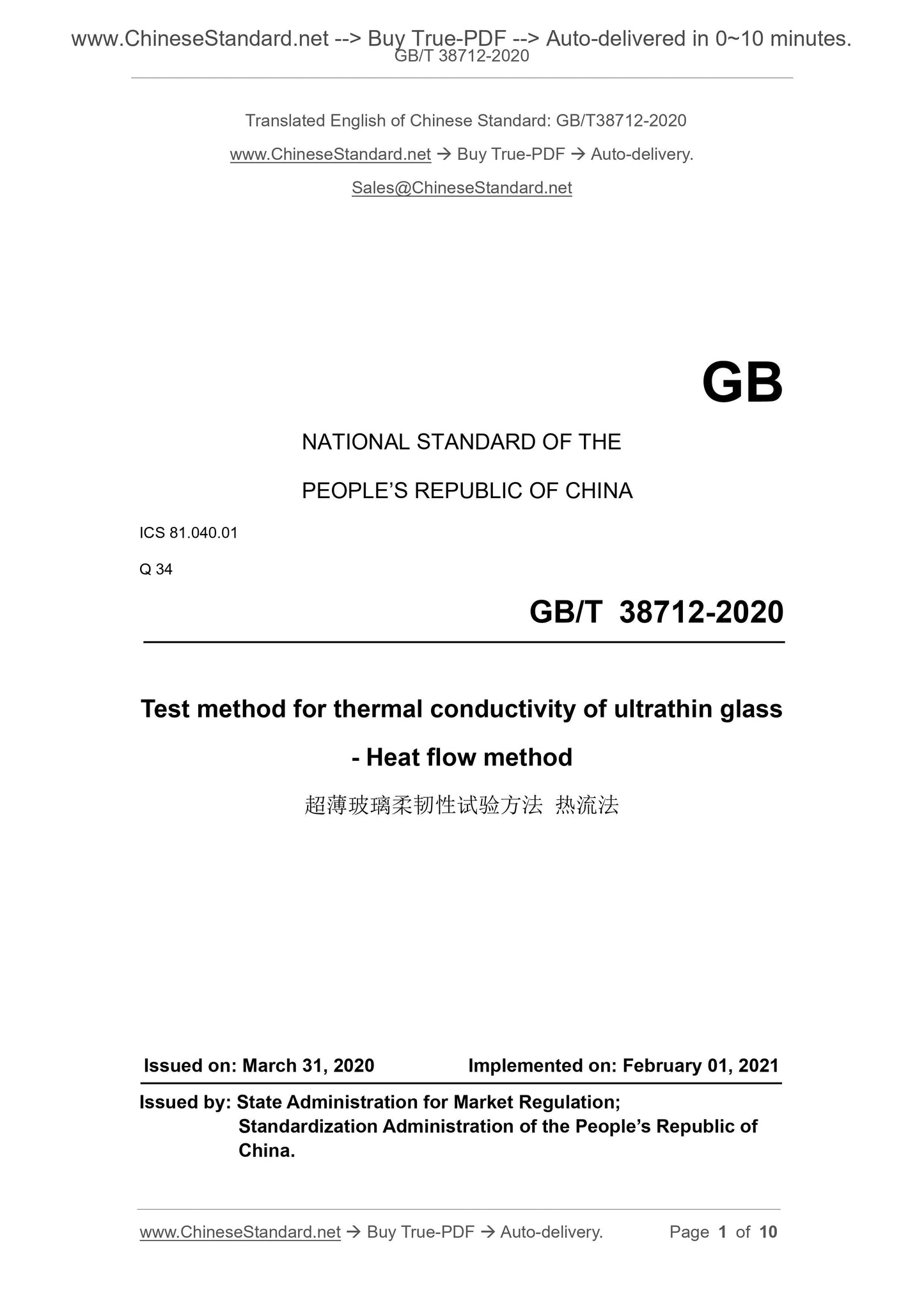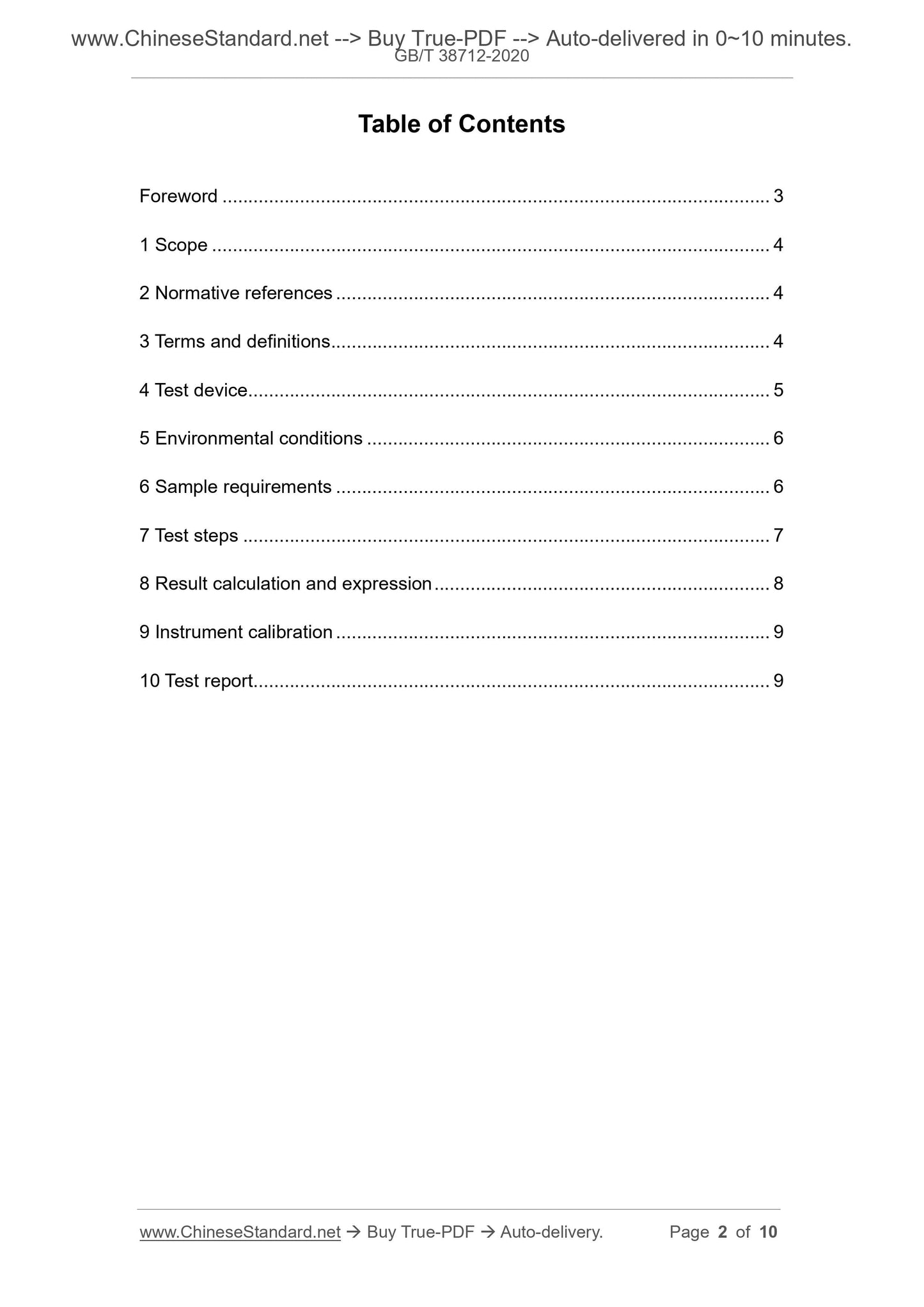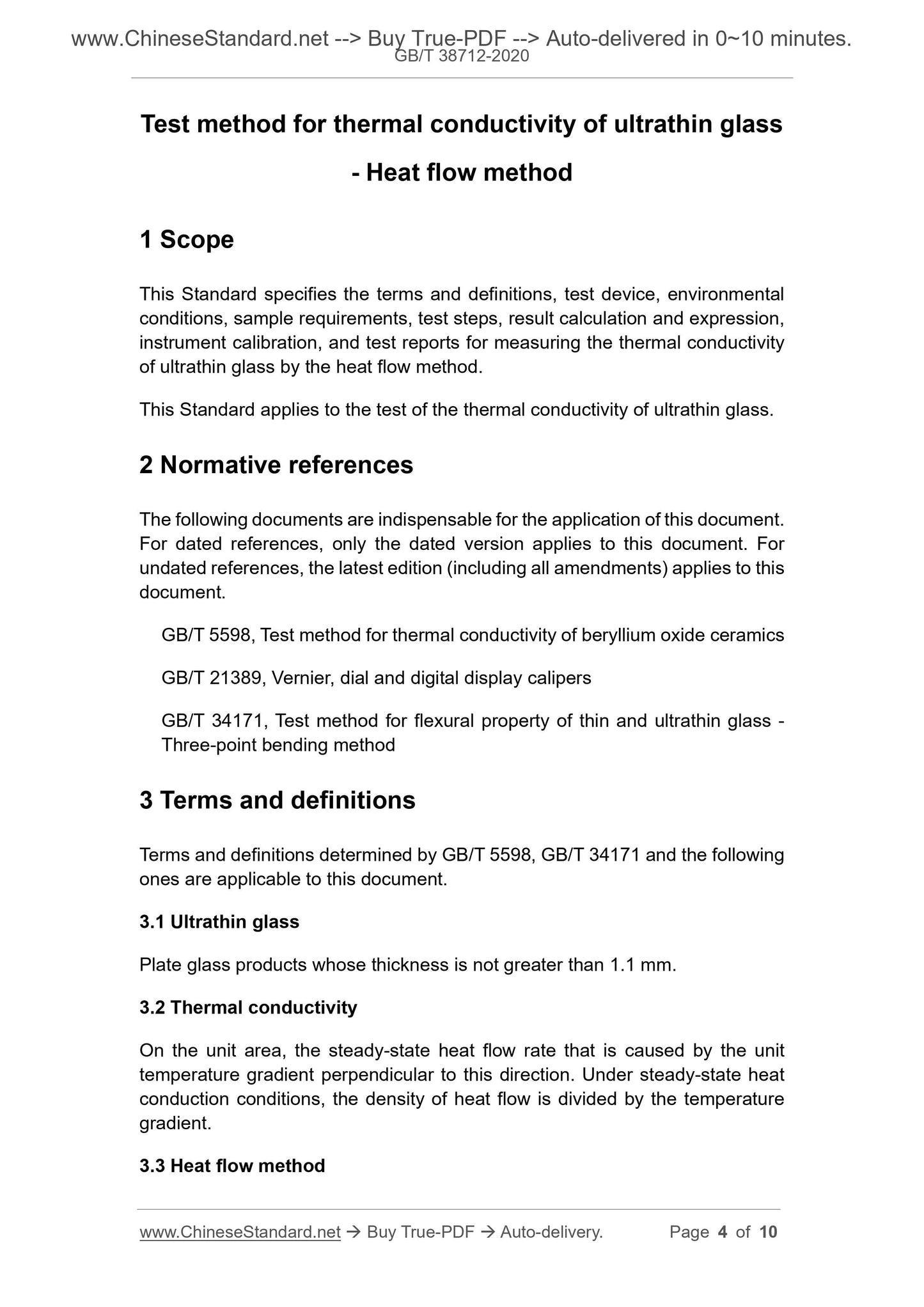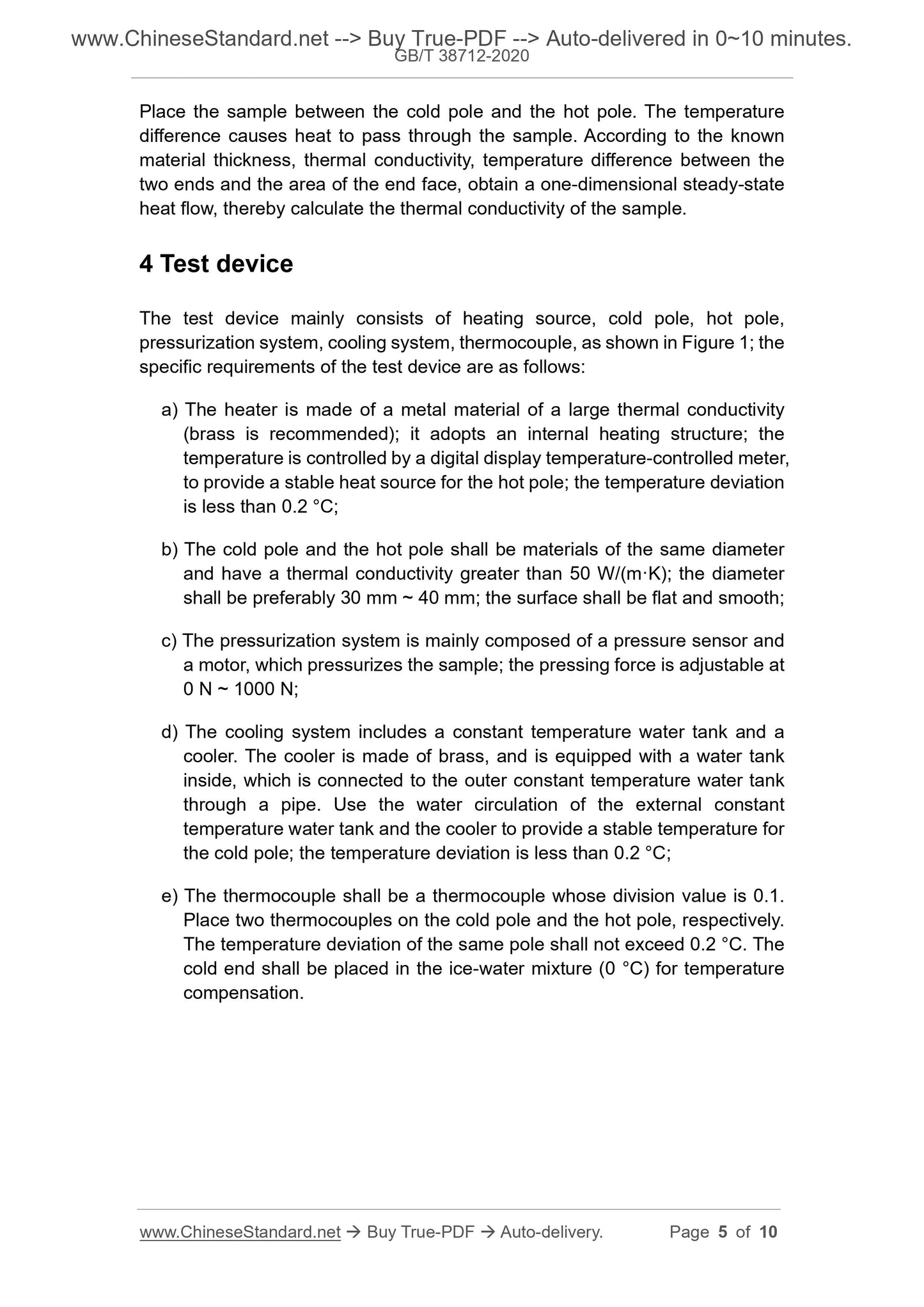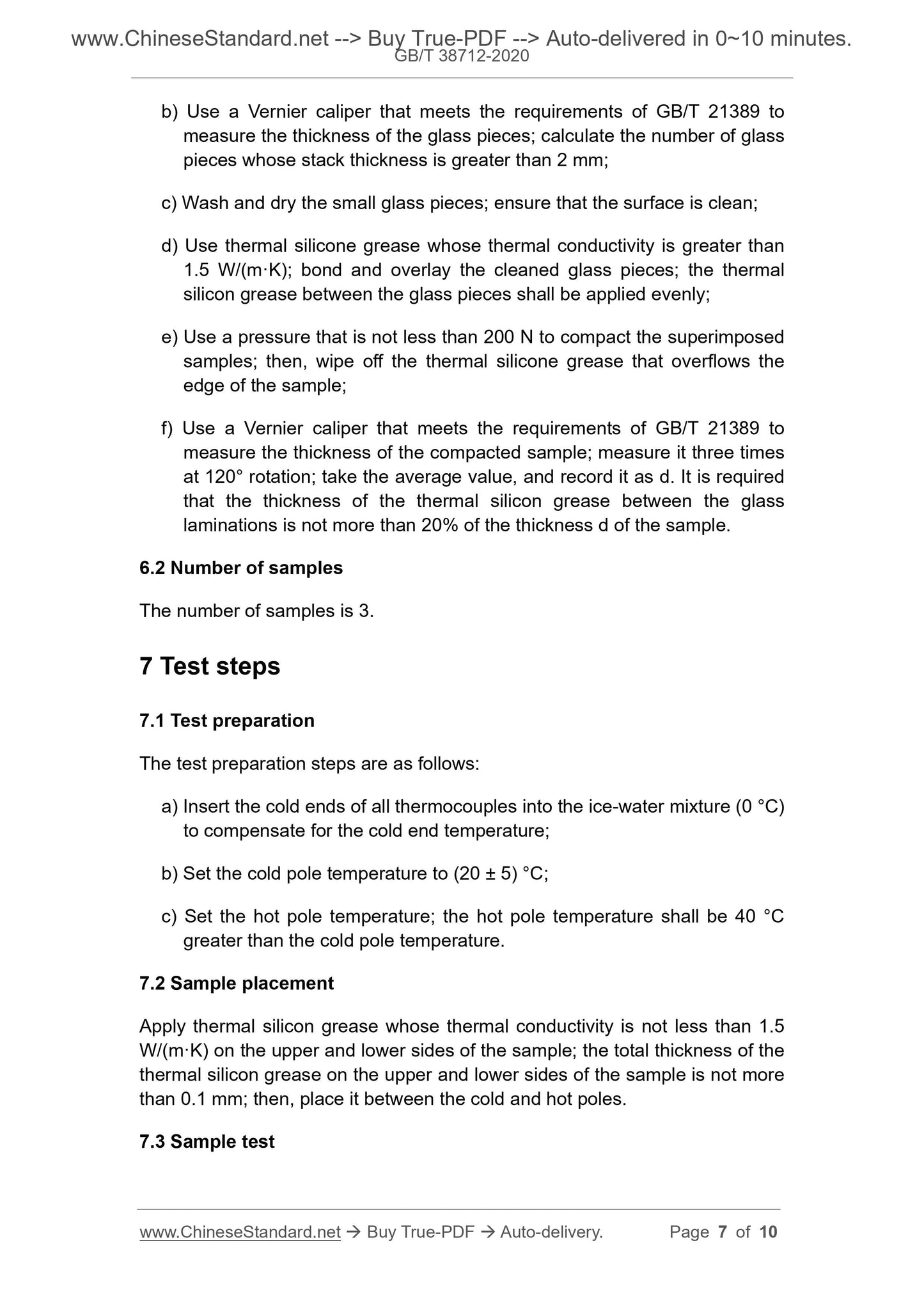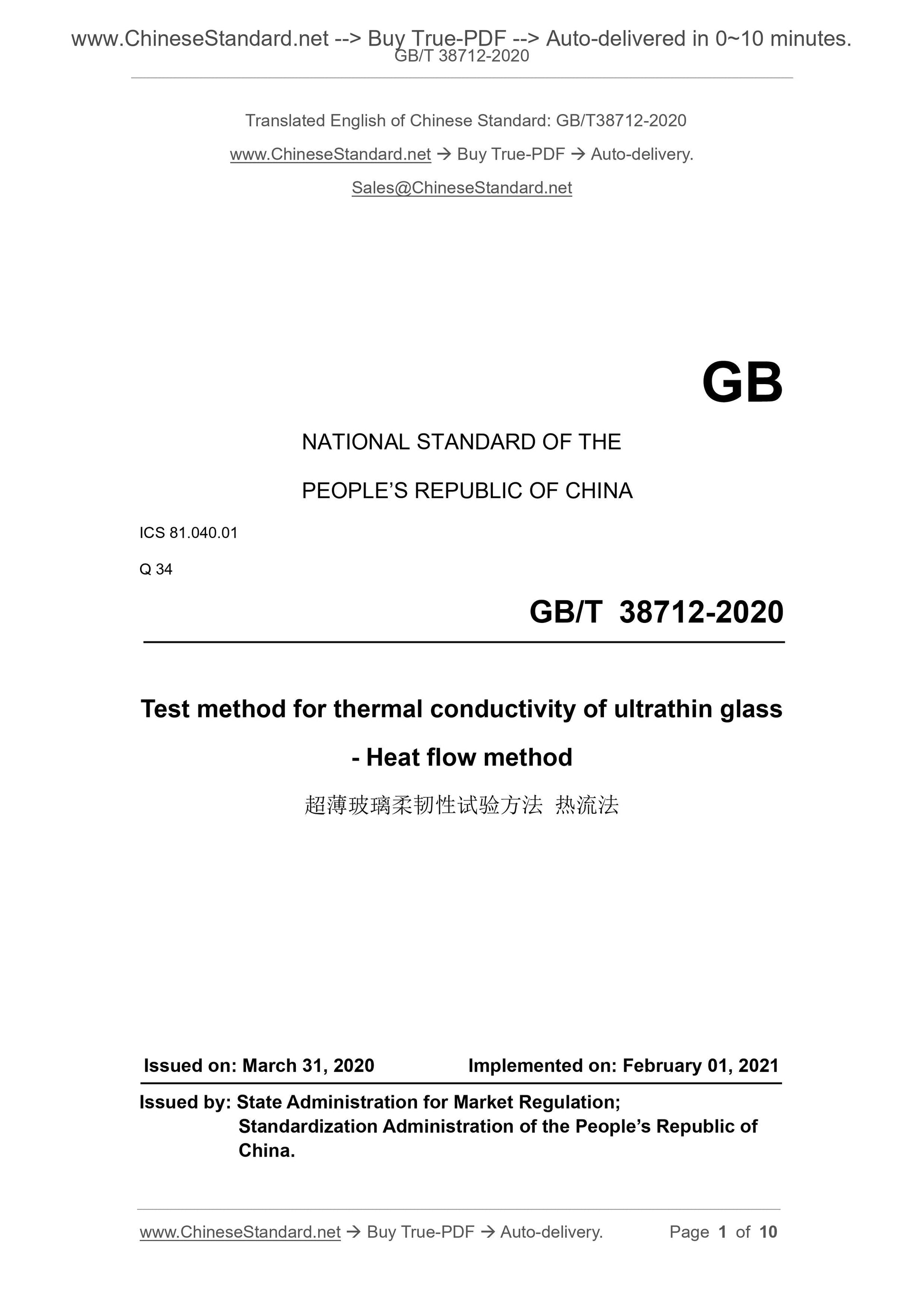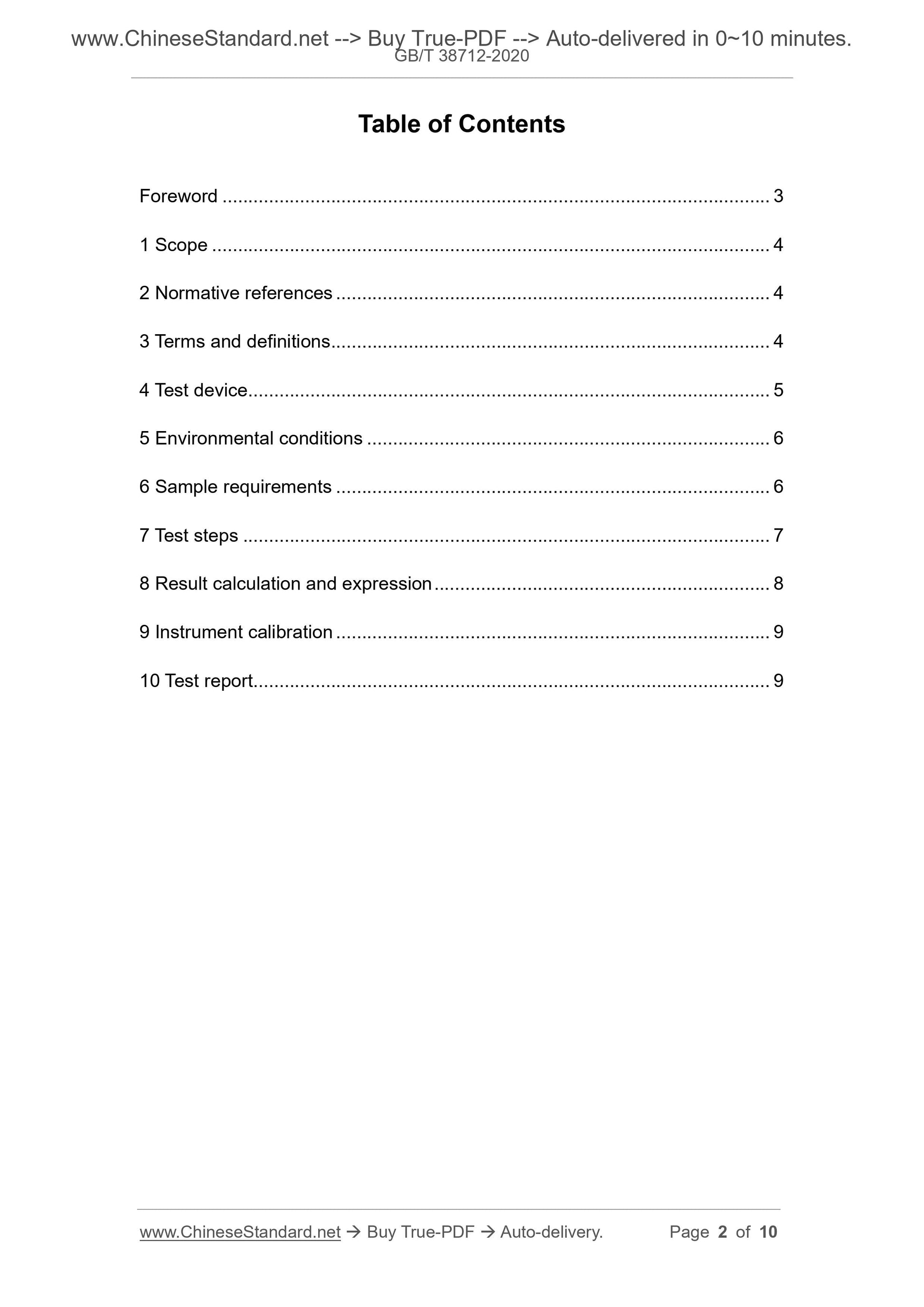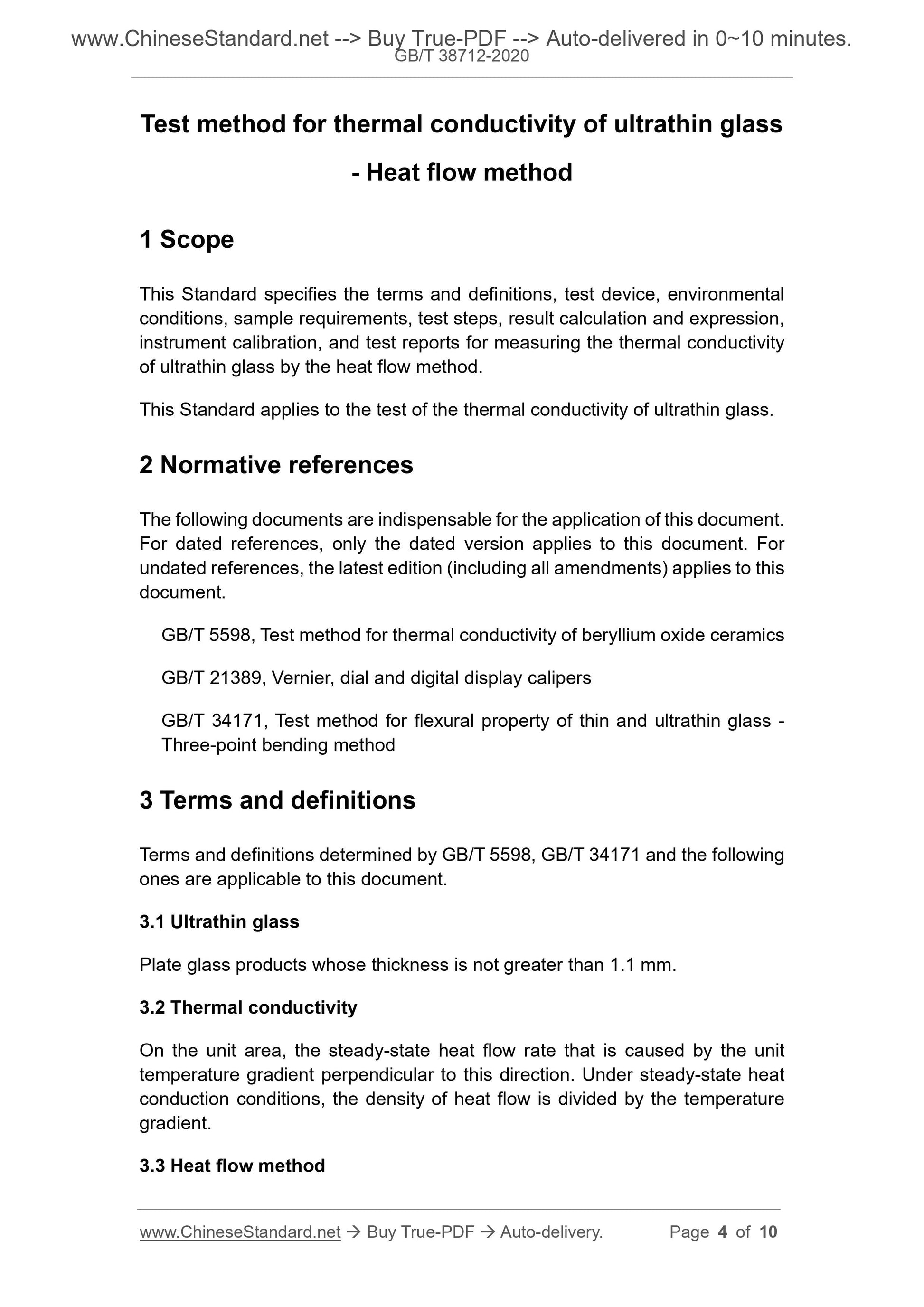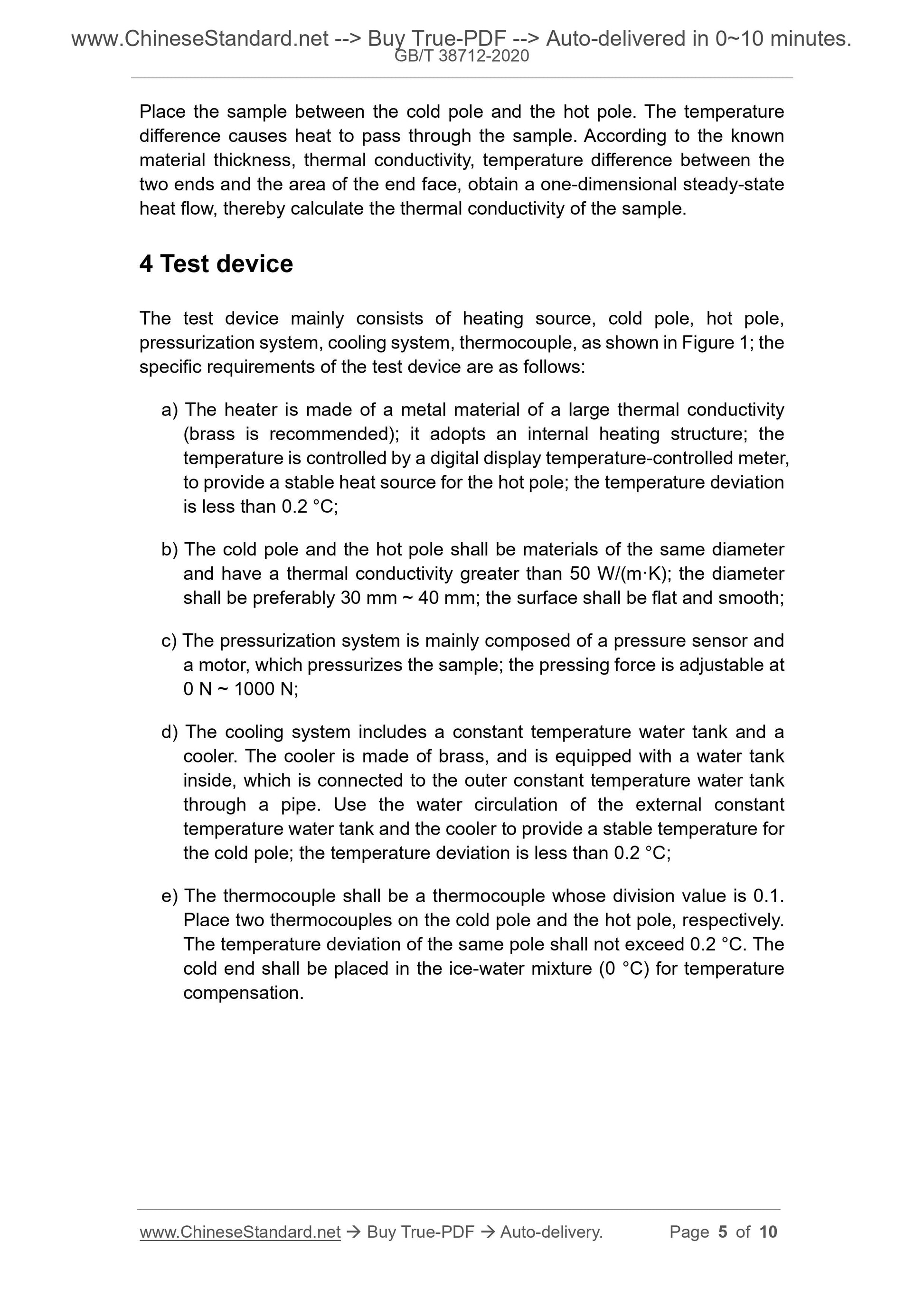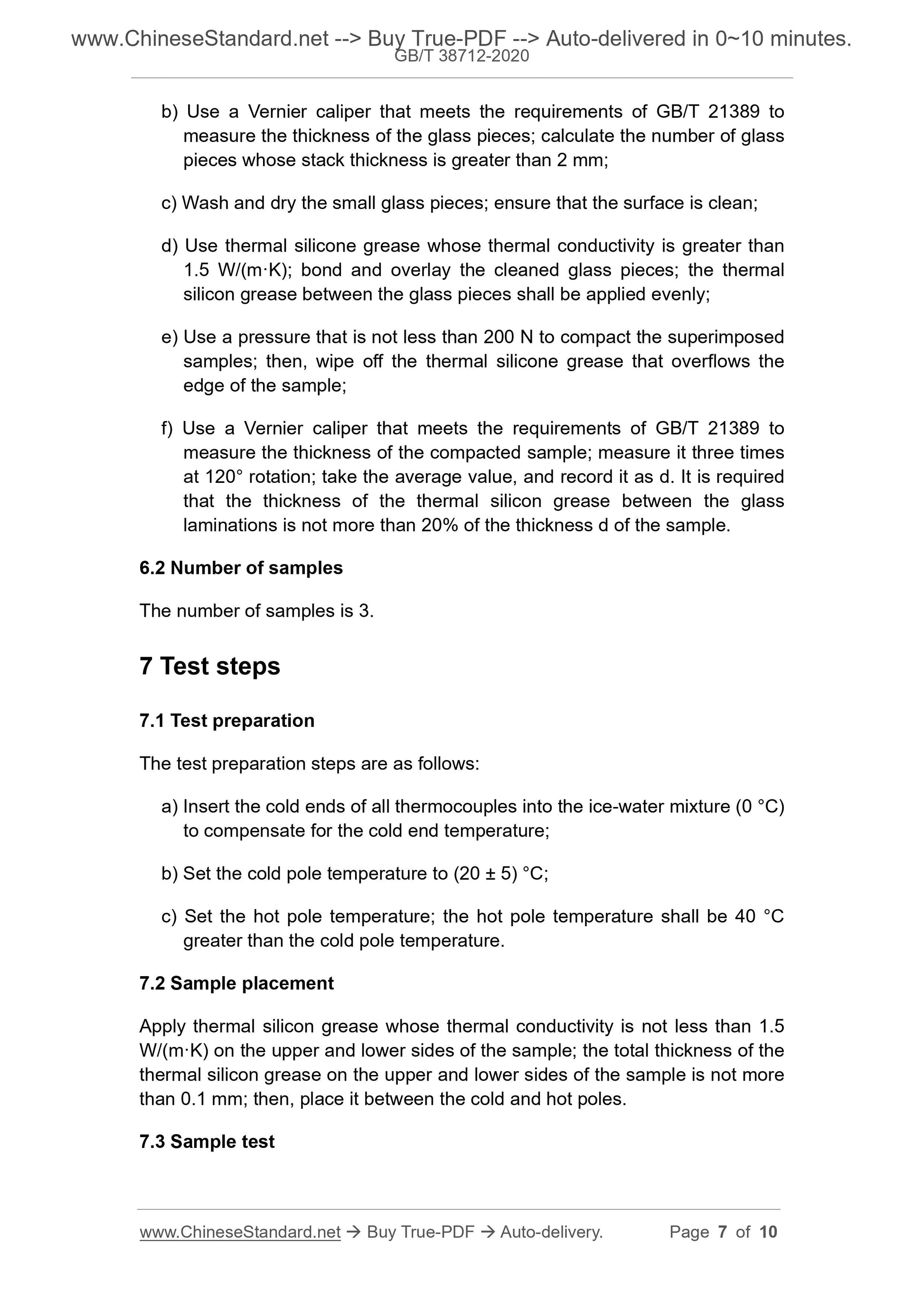1
/
of
5
www.ChineseStandard.us -- Field Test Asia Pte. Ltd.
GB/T 38712-2020 English PDF (GB/T38712-2020)
GB/T 38712-2020 English PDF (GB/T38712-2020)
Regular price
$125.00
Regular price
Sale price
$125.00
Unit price
/
per
Shipping calculated at checkout.
Couldn't load pickup availability
GB/T 38712-2020: Test method for thermal conductivity of ultrathin glass - Heat flow method
Delivery: 9 seconds. Download (and Email) true-PDF + Invoice.Get Quotation: Click GB/T 38712-2020 (Self-service in 1-minute)
Newer / historical versions: GB/T 38712-2020
Preview True-PDF
Scope
This Standard specifies the terms and definitions, test device, environmentalconditions, sample requirements, test steps, result calculation and expression,
instrument calibration, and test reports for measuring the thermal conductivity
of ultrathin glass by the heat flow method.
This Standard applies to the test of the thermal conductivity of ultrathin glass.
Basic Data
| Standard ID | GB/T 38712-2020 (GB/T38712-2020) |
| Description (Translated English) | Test method for thermal conductivity of ultrathin glass - Heat flow method |
| Sector / Industry | National Standard (Recommended) |
| Classification of Chinese Standard | Q34 |
| Classification of International Standard | 81.040.01 |
| Word Count Estimation | 6,667 |
| Date of Issue | 2020-03-31 |
| Date of Implementation | 2021-02-01 |
| Quoted Standard | GB/T 5598; GB/T 21389; GB/T 34171 |
| Issuing agency(ies) | State Administration for Market Regulation, China National Standardization Administration |
| Summary | This standard specifies the terms and definitions, test equipment, environmental conditions, sample requirements, test procedures, calculation and representation of results, instrument calibration, and test reports for the determination of thermal conductivity of ultra-thin glass by heat flow method. This standard applies to the test of thermal conductivity of ultra-thin glass. |
Share
